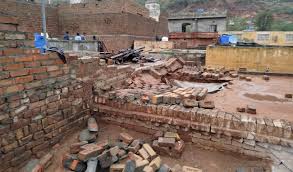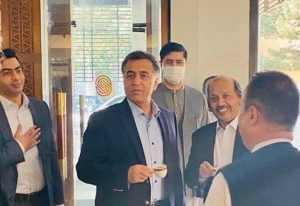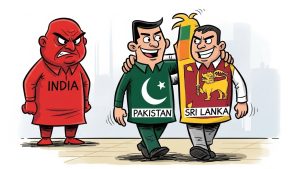As monsoon clouds gather over Punjab, they bring with them not only rain but also a renewed sense of dread for thousands of families living in fragile, decaying houses. For the poor, each raindrop threatens to become a disaster. With every passing season, lives are lost—not to floods or lightning—but to the silent killers of poverty: collapsing walls and crumbling roofs.
Yesterday, 26 June, witnessed a troubling rise in fatalities across several districts of Punjab due to the collapse of unsafe structures. Families sleeping under worn-out roofs have been crushed as their homes gave way to the weight of water. Children have died in their sleep, women buried under debris, and elderly left homeless with no option but to live under open skies.
According to local news reports and rescue authorities, dozens of such incidents have occurred in rural and semi-urban areas where people dwell in mud houses or poorly constructed concrete structures without any reinforcements. For them, the monsoon is not a relief from the heat—it is a season of terror.
The majority of poor households in Punjab live in structures built decades ago using substandard materials. Due to lack of financial resources and technical guidance, many houses lack proper roofing, foundations, or waterproofing. The absence of structural assessment, maintenance, or even access to affordable credit for repairs means these homes deteriorate year after year.
When heavy rains fall, water seeps into cracks, weakens already fragile walls, and causes ceilings to collapse. With no alternate shelter, people continue living in these death-traps.
This is a humanitarian crisis hidden in plain sight. The Punjab government needs to immediately take a multi-pronged approach:
1- Emergency Assessment
Deploy local administration, union councils, and disaster management authorities to identify and map high-risk houses before the next heavy rain.
2- Rehabilitation Grants
Allocate emergency funds for the repair and reconstruction of unsafe homes, prioritizing widows, disabled persons, and families with children or elderly.
3- Micro-Financing Support
Launch subsidized loan schemes for poor families to rebuild or strengthen their homes with technical support from housing authorities.
4- Community Shelter Plans
Establish temporary but safe community shelters in vulnerable areas, especially during peak monsoon weeks.
5- Rural Housing Infrastructure Policy
Enforce a rural infrastructure improvement program aimed at long-term housing rehabilitation and resilience building, especially in flood-prone areas.
6- Mobile Technical Teams
Set up district-level mobile engineering teams to assist poor families in assessing structural risks and guide them on affordable repairs.
Role of NGOs and INGOs in Housing Safety:
While government intervention is crucial, the development sector has a pivotal role to play in filling the gaps:
Local NGOs can mobilize communities, conduct awareness sessions on house safety and seasonal preparedness, and organize volunteer support for vulnerable families.
International NGOs (INGOs) can introduce low-cost housing models, pilot resilient building technologies, and provide technical training to local masons and builders.
INGOs and local NGOs can jointly work with the government under Public-Private Partnership (PPP) models to scale up safe housing interventions across Punjab.
NGOs can initiate cash-for-work programs that engage local labor for house reinforcement projects while also providing income support.
The development sector must advocate for inclusive urban and rural planning that considers climate resilience and poor population needs in infrastructure design.
Every life lost to a collapsing roof is a tragedy that could have been prevented. The government of Punjab must treat unsafe housing not just as a poverty issue, but as an emergency matter of life and death. This monsoon, let us not allow rain to be the cause of another child’s funeral or a mother’s grave.
By combining government will, civil society support, and development sector expertise, it is possible to build a safer, more humane Punjab—where a home remains a place of comfort, not of peril.














